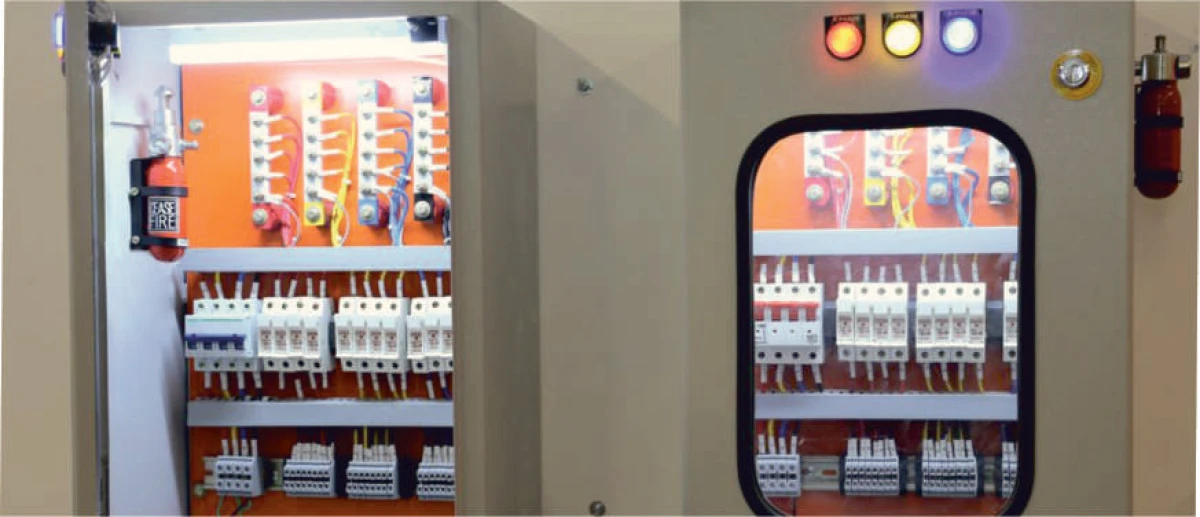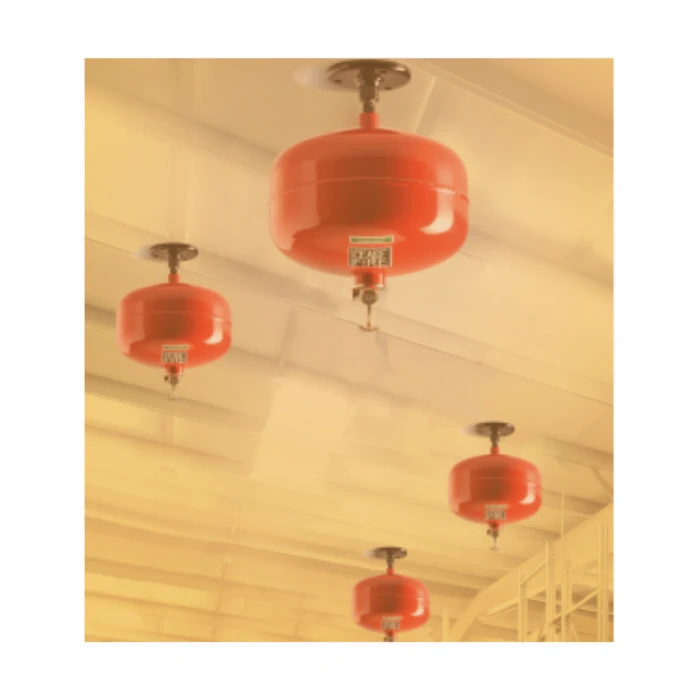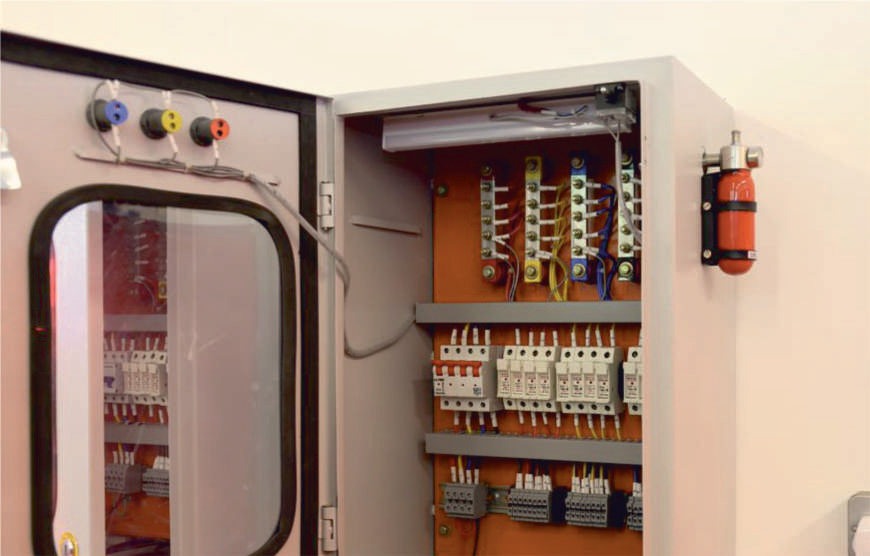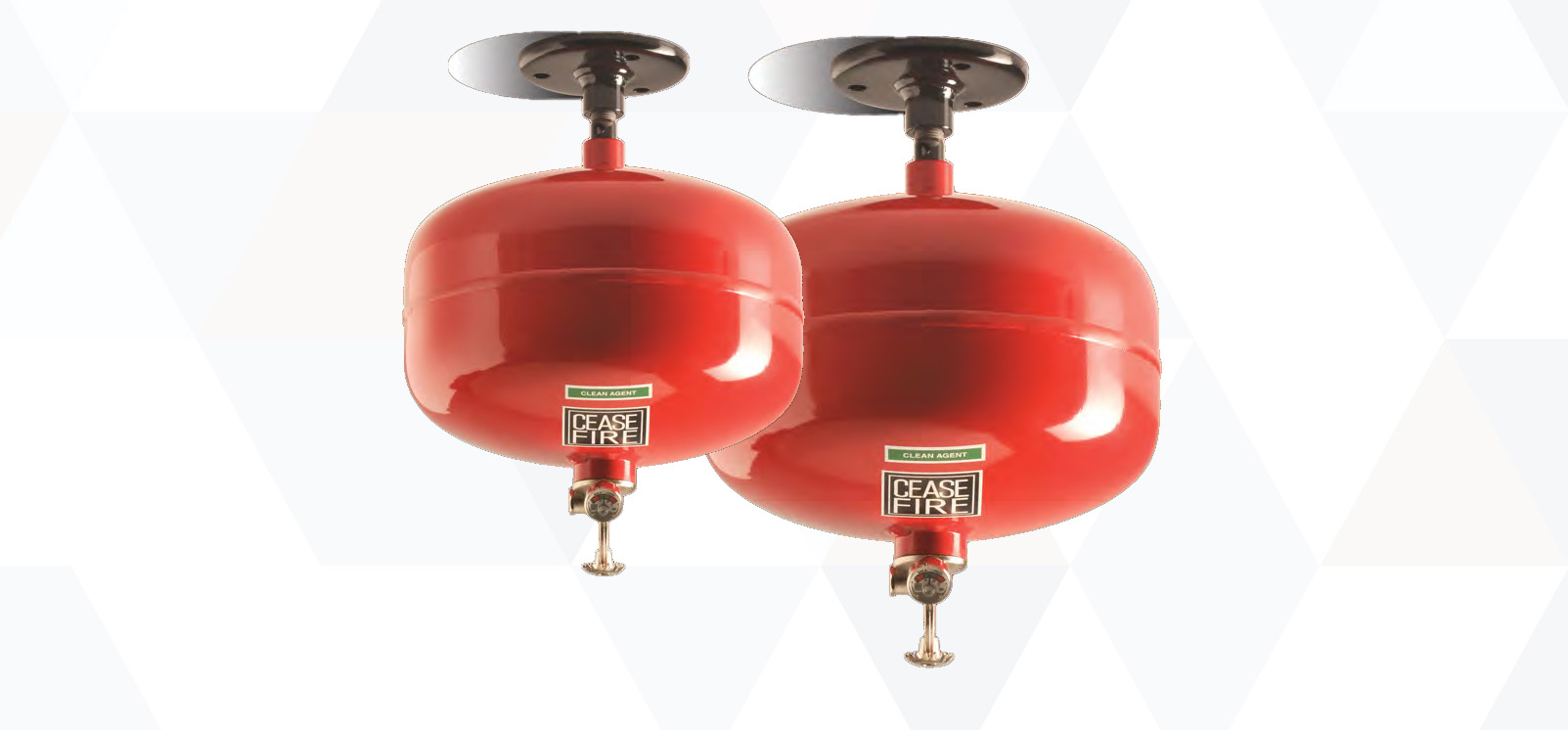
Need assistance?
Need Assistance? Call Us 0330 058 0631
19/06/2024 • by Lynsey B

Automatic fire protection systems are brilliant for safeguarding various environments, from industrial settings to residential spaces. These systems, including automatic fire suppression systems and automatic fire extinguishers, play a role in containing fires and mitigating potential damage. This blog explores the benefits offered by these systems and their applications in different scenarios.
Automatic fire protection systems are innovative systems in modern fire safety. They have been designed to autonomously detect and suppress fires without requiring human intervention. At the heart of automatic fire protection systems are sophisticated sensors that continuously monitor the environment for signs of fire. These sensors can detect various indicators such as heat, smoke or flames. Upon detecting a fire or abnormal heat levels, automatic fire protection systems initiate a rapid response mechanism. This typically involves the deployment of specialised extinguishing agents tailored to the type of fire and the specific environment.
Heat Detection: Heat-sensitive detectors are commonly used in areas where smoke detection might not be ideal, such as in dusty or humid environments. These detectors trigger when temperatures rise above a predetermined threshold, signalling the presence of a fire.
Smoke Detection: Optical smoke detectors utilise light beams to detect smoke particles in the air. When smoke is present, it disrupts the light beam, triggering an alarm and potentially activating the fire suppression system.
Flame Detection: In some high-risk environments, flame detectors are employed to detect the presence of actual flames. These detectors use infrared or ultraviolet sensors to identify the unique signature of flames, ensuring rapid response to fires that have already ignited.
Water: Suitable for extinguishing Class A fires involving ordinary combustibles such as paper. Water-based suppression systems typically involve sprinkler heads that release water when triggered by heat or smoke.
Powder Agents: Effective against Class A, B and C fires (solid combustibles, flammable liquids and gases). Powder agents like ABC powder or specific types such as sodium bicarbonate are dispersed to smother the fire and interrupt the combustion process.
Clean Agents: These include gases such as FM-200, Novec 1230 or CO2. These are non-conductive and leave no residue after deployment. Clean agent systems are favoured in environments like server rooms. This is due to sensitive electronic equipment that could be damaged by water or powder residue.
Automatic fire extinguishers are important for enhancing fire safety in challenging settings like boat engines and engine rooms. They can also be applied in critical areas such as fuse boxes or server rooms. These specialised extinguishers are designed to detect fires early and suppress them effectively.

Boat engines and their associated engine rooms present unique fire safety challenges due to their confined spaces and the presence of flammable fuels and oils. In marine environments, where access to these areas can be restricted, the need for reliable fire suppression systems is prevalent. Automatic fire extinguishers designed specifically for marine use are engineered to meet these challenges.
These extinguishers are typically compact and designed to withstand the harsh conditions of marine environments, including corrosion resistance and water-tight seals. They are strategically installed within engine compartments or nearby areas where fires are most likely to occur. The detection mechanisms of these extinguishers may utilise heat sensors or flame detectors, which activate upon detecting abnormal heat levels or flames.
When a fire is detected, the automatic extinguisher releases an appropriate extinguishing agent tailored to the type of fire. For marine applications, extinguishing agents may include clean agents like FM-200 or CO2. These are effective in suppressing fires without leaving residue that could damage sensitive equipment or contaminate the environment. The rapid response of these systems is critical in preventing fires from spreading and causing catastrophic damage to the vessel and endangering its occupants.
Fuse boxes are significant components of electrical systems. They house circuits and electrical elements that can potentially overheat and ignite under certain conditions. Electrical fires in fuse boxes can spread quickly and pose significant risks to property and infrastructure. Automatic fire suppression systems installed near fuse boxes are specifically designed to detect and suppress electrical fires fast.
These extinguishers are equipped with specialised detection systems that can identify the unique characteristics of electrical fires, such as heat without smoke or visible flames. Upon detection, the extinguisher releases an agent that is safe for use around electrical equipment. This can typically be a clean agent like CO2 or a specialised powder. They help to extinguish the fire without conducting electricity or causing damage to sensitive electronics.
Server rooms house IT infrastructure and equipment that are highly sensitive to fire. Automatic fire extinguishers in server rooms typically use clean agents such as FM-200 or Novec 1230. These substances effectively suppress fires without leaving residue. This ensures that the equipment remains operational and undamaged, minimising downtime and maintaining business productivity. The use of clean agents is particularly favoured because they do not harm electronics and provide a rapid response to fires.
Fume cupboards, also known as chemical cupboards, are used to contain hazardous chemicals and protect laboratory environments from toxic fumes and potential fires. Automatic fire extinguishers installed in these cupboards are designed to quickly detect and suppress chemical fires. The extinguishing agents used must be compatible with the chemicals stored, ensuring safe and effective fire suppression. Clean agents are often preferred in these settings to avoid contamination and ensure the integrity of the stored chemicals.

Automatic fire extinguishers are available in different configurations to suit various environments and fire protection needs. One of the primary considerations when selecting an automatic extinguisher is whether to opt for a wall-mounted or ceiling-mounted model. Each configuration offers distinct advantages depending on the layout of the space and the specific requirements for fire suppression.
Wall-mounted automatic extinguishers are designed to be conveniently installed at a reachable height on a wall within the protected area. These compact extinguishers are particularly advantageous in environments where space is limited or where specific fire risks are concentrated. Occupying minimal floor space, they are well-suited for small rooms, corridors or areas where other fire safety equipment may not fit comfortably.
Their placement at eye level facilitates easy inspection, maintenance and activation during fire emergencies. This accessibility also allows them to be strategically positioned near high-risk areas or specific fire hazards. Therefore they can provide targeted protection where it is most needed.
Ceiling-mounted automatic extinguishers are strategically installed on the ceiling within the protected area. These extinguishers are particularly valued for their ability to provide extensive coverage and efficient dispersal of extinguishing agents. They are ideal for large, open spaces such as warehouses, manufacturing facilities or open-plan offices. Ceiling-mounted units ensure complete suppression capabilities across expansive areas. Positioned overhead, they can distribute extinguishing agents effectively throughout the entire environment, quickly suppressing fires regardless of their location.
The main difference between automatic powder extinguishers and clean gas extinguishers lies in their composition and how they suppress fires. Automatic powder extinguishers use fine powder particles, typically made from substances like sodium bicarbonate or ammonium phosphate. When discharged, these powders work by smothering the flames and interrupting the chemical reaction of the fire. They are effective against Class A, Class B and Class C fires. However, they can leave a messy residue after deployment. This may require a thorough cleanup and can potentially damage sensitive equipment or electronics.
On the other hand, clean gas extinguishers utilise gases such as FM-200, Novec 1230 or CO2. These gases are non-conductive and non-corrosive, making them safe to use around electrical equipment and sensitive electronics. Clean agents work by chemically disrupting the combustion process of the fire, effectively extinguishing it without leaving any residue behind. They are particularly favoured in environments like server rooms, data centres or laboratories where preserving equipment is important.
Yes, you can get an automatic extinguisher for Class F fires. Class F fires involve cooking oils and fats, commonly found in commercial kitchens and food preparation areas. These fires require specialised extinguishers because of the high temperatures and the nature of the burning materials.
Automatic extinguishers designed for Class F fires use a wet chemical agent, typically a solution of potassium acetate, potassium carbonate or potassium citrate. When discharged, this chemical forms a soapy layer on the surface of the burning oil or fat. In turn, this cools it down and cuts off the oxygen supply, effectively extinguishing the fire and preventing re-ignition.
These automatic extinguishers can be ceiling-mounted or installed in areas prone to Class F fires, such as above cooking ranges or fryers. They are equipped with sensors that detect the high heat levels associated with these fires and activate the release of the wet chemical agent to stop the flames.

Deciding between automatic and manual fire suppression systems depends on various factors, including the specific fire risks, the environment and the level of human presence. Automatic fire suppression systems offer the significant advantage of immediate response without human intervention. This can be vital in environments where fires can escalate quickly or where human presence is limited. They provide continuous monitoring and rapid activation, ensuring that fires are detected and stopped at an early stage.
On the other hand, manual fire suppression systems require human intervention to operate. While they can be effective in certain situations, they depend on the presence and action of trained personnel. There may not be someone present in every scenario. In high-risk environments or areas with valuable and sensitive equipment, automatic systems are generally preferred for their reliability and quick response.
Clean agent fire extinguishers are increasingly popular in environments where maintaining operational integrity and cleanliness is essential. These extinguishers use gaseous agents such as FM-200, Novec 1230 or CO2 to suppress fires by chemically interrupting the combustion process. This method is highly effective and offers several distinct advantages. This makes clean agent extinguishers an excellent choice for various applications, especially those involving sensitive equipment.
One of the primary benefits of clean agent fire extinguishers is their suitability for protecting sensitive equipment. Unlike traditional extinguishers that use water or powder, clean agents are non-conductive and non-corrosive. This makes them ideal for environments with delicate electronic devices, such as server rooms, data centres and telecommunications facilities. These systems can suppress fires without causing damage to electronic circuits or leaving behind any residue that could interfere with the equipment's functionality. By ensuring that sensitive equipment remains intact and operational, clean agent extinguishers help businesses avoid costly downtime and data loss.
Another significant advantage of clean agent fire extinguishers is their residue-free nature. When a clean agent is deployed, it leaves no powdery or wet residue, unlike other extinguishing agents. This characteristic is particularly valuable in environments where cleanliness is essential, such as laboratories, museums and healthcare facilities. After the fire is suppressed, there is no need for extensive cleanup, allowing for a quicker return to normal operations.

In addition to their operational advantages, clean agent fire extinguishers offer significant environmental benefits. Modern clean agents are designed to be environmentally friendly, with low global warming potential (GWP) and zero ozone depletion potential (ODP). This makes them a responsible choice for businesses aiming to align with modern sustainability goals.
Global warming potential is a measure of how much heat a greenhouse gas traps in the atmosphere over a specific time period compared to carbon dioxide. Clean agents with low GWP contribute less to global warming, helping mitigate climate change. For example, FM-200 and Novec 1230 are designed to have minimal impact on global warming, making them preferable to older, less eco-friendly fire suppression agents.
Ozone depletion potential indicates the potential of a substance to deplete the ozone layer, which protects the Earth from harmful ultraviolet radiation. Older fire suppression agents, such as halons, were found to have high ODP, leading to their phase-out under international agreements. In contrast, modern clean agents like FM-200 and Novec 1230 have zero ODP, ensuring they do not contribute to the depletion of the ozone layer. This adherence to environmental standards is crucial for businesses looking to maintain compliance with regulations and support global environmental initiatives.
12/08/2025 • by Megan Downing